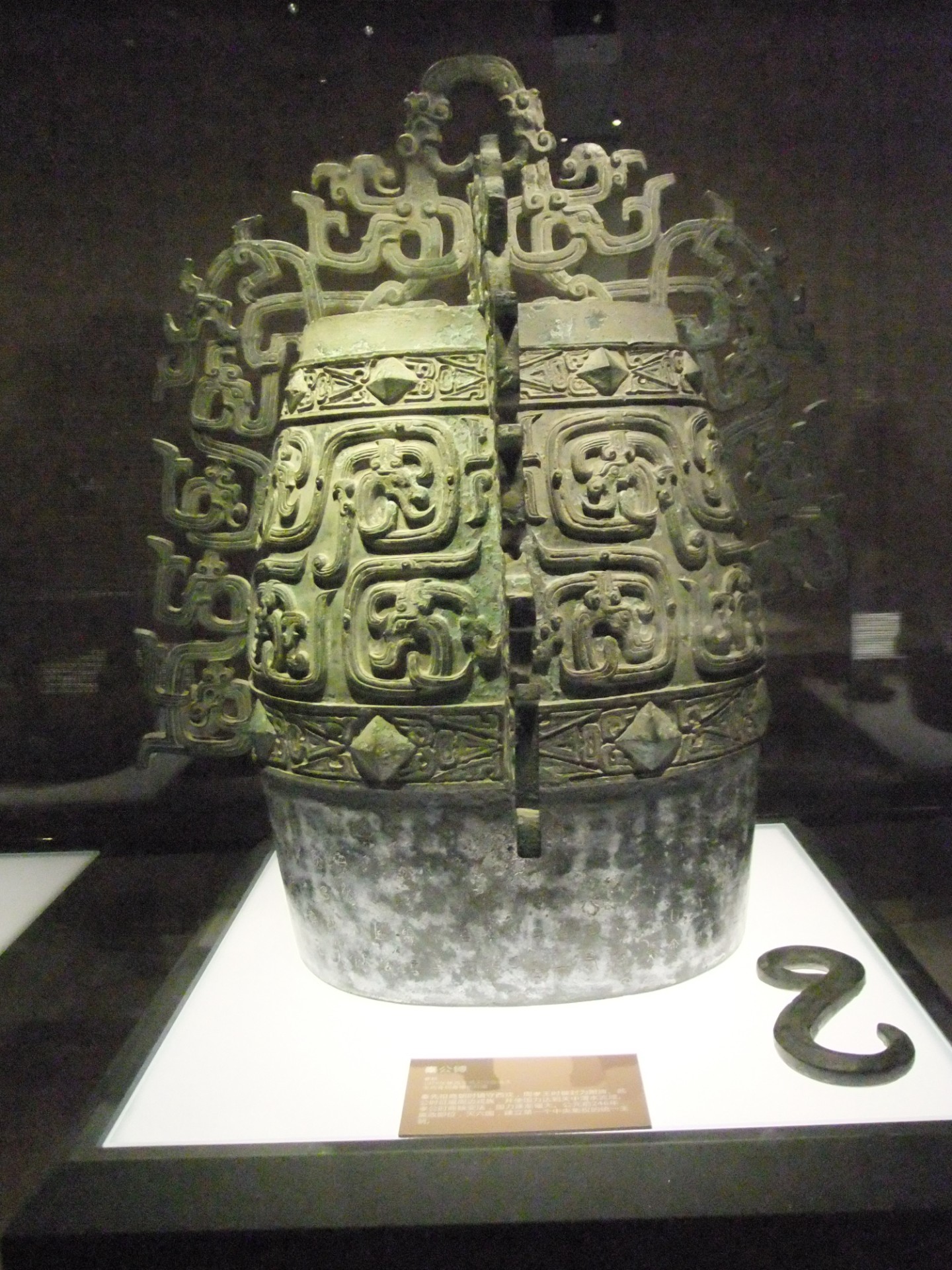The evolution of mushrooms in different periods
497 views · Organized by 赵锦辛 on 2022-02-18
early mushrooms
Mushroom appeared in the late Shang Dynasty. It is a bronze music hanging, an earlier musical instrument with complex shape and gorgeous decoration. In terms of shape, it has a relationship with the bronze bells of the Xia Dynasty and the Shang Dynasty. The early mushroom cavities were mostly oval, or oval with a rectangle.Mushroom first appeared in the activity area of the ancient Yue people in the south. At this time, the level of musicology and metallurgy in the south was not lower than that of the Central Plains in the north. Then appeared in the Central Plains in the north.
The earliest mushroom is a vortex-patterned animal-faced mushroom (single piece) unearthed from the tomb of the late Yin Dynasty in Oceania, Xingan County, Jiangxi Province.
The earliest northern mushrooms are the tiger-backed mushrooms unearthed in 1985 in Yangjia Village, Majia Town, Meixian County (mid-Western Zhou Dynasty);
The early mushroom shape was peculiarly conceived, the ornamental design was elaborate and gorgeous, and the manufacture required extremely superb technology. Compared with the mushrooms of later generations, in addition to the enlargement of the shape, the decoration has a tendency of simplification.

mid-late mushroom
Around the middle of the Spring and Autumn Period, mushrooms had a great development in the Central Plains. During the Spring and Autumn Period, rituals collapsed and music broke down, and the various princes despised the authority of the Zhou Dynasty and created larger mushrooms with better musical performance.Get bigger. Mushrooms are bigger in size, which can reflect its ceremonial function and show the status and prestige of the owner.
For example, in the autumn of 1923, the special bamboo (4 pieces) was unearthed in the tomb of Yizheng, Lijialou, Xinzheng, Henan. Mid-Spring and Autumn Period, two of which weigh 105.8 kg and 139.0 kg.
Its musical performance isn't great, and there's no noticeable tuning marks. However, with such a large body and an extremely deep and distant voice, it can already make it imposing.
The music performance is perfect. Better musical performance can also reflect the majesty of the king, and it is an inherent development trend of the instrument itself.
For example, in May 1988, weaving mushrooms (19 pieces) were unearthed in the tomb of No. 251, Jinsheng Village, Taiyuan, Shanxi Province. Well-made, the cavity is tile-shaped, with a tendency to be round; it is flat and dance, and the two millings are slightly curved.
Compared with the early mushrooms, except for the ornate buttons, these 19 braided mushrooms do not have the complicated ridges and edges. But its musical performance is good. This group of chords consists of 38 tones with different pitches, forming four octaves. And repeated the 7-tone scale (Gong, Shang, Jiao, Zheng, Yu, plus Qingjiao, Biangong) in three octave clocks.
Compared with Yong bells, the cavities of the bells tend to be rounded, the milling edges are not protruding, the bells are shorter, and the mouth is flush. These characteristics make it more likely to cause "reverberation" than Yong bells when several mushrooms are struck continuously, making it difficult to play music with a faster rhythm.
Due to these shortcomings, weaving mushrooms have gradually declined since the late Spring and Autumn Period. In the late Spring and Autumn Period, a large number of weaving mushrooms were made, and there was nothing new in terms of shape and musical performance. At the end of the Warring States Period, it was merged by the button clock.
Involving musical instruments
The bo (pinyin: bó) is a musical instrument with a shape close to that of a bell. The body of the mushroom is larger than that of the bell, and the cross-section of the body is oval . In the early days, there were many bird-shaped, tiger-shaped, or Kui-shaped "wings" on both sides of the mushroom, and the decoration was gorgeous and complicated. It is a large single percussion instrument of the ancient Han nationality.
Guess you like
Organized by 关谷奇迹 on 2022-02-28
During the Western Zhou Dynasty, the bells and chimes of Rongsheng were probably multi-sequence sound instrumental music created by the sages of the Qin people (also known as the Quan Rong). It has a rich tone of quaint, deep, varied, mysterious, and can produce a very wonderful modern polyphonic tone.
read >>
Organized by 一杯清酒 on 2022-02-28
It was first seen in the late Yin Dynasty and prevailed in the Eastern Zhou Dynasty. Musical instruments unearthed from Yin Ruins in Anyang, Henan have been used for elegant music since the Zhou Dynasty.
read >>
Organized by 九曲 on 2022-02-28
Chinese music is an important part of the splendid Chinese culture. Before the middle of the 19th century, it experienced three periods: ancient, medieval and modern. For thousands of years, it is famous for its colorful varieties and rich systems.
read >>
Organized by 雨童 on 2022-02-18
Pistachio is a large single percussion instrument of the ancient Han nationality. Aristocrats often used it in conjunction with bells and chimes when feasting or offering sacrifices. It is characterized by a ring button, a flat mouth, and an oval or tile-shaped body.
read >>
 渝公网安备 50010702504639号
渝公网安备 50010702504639号